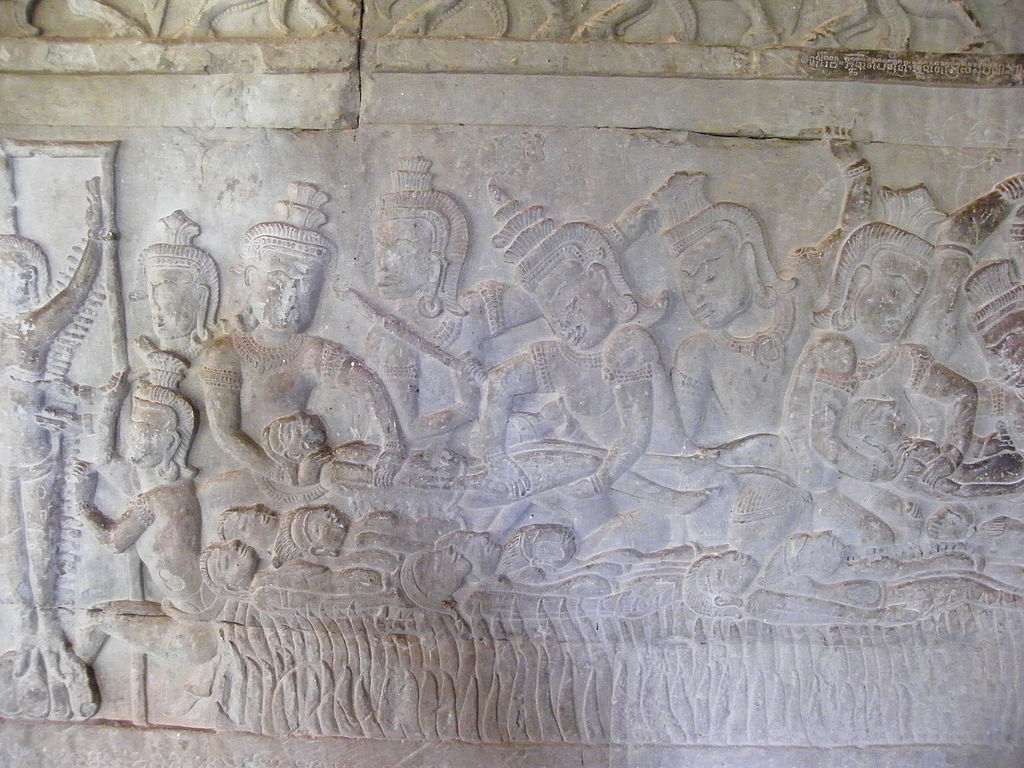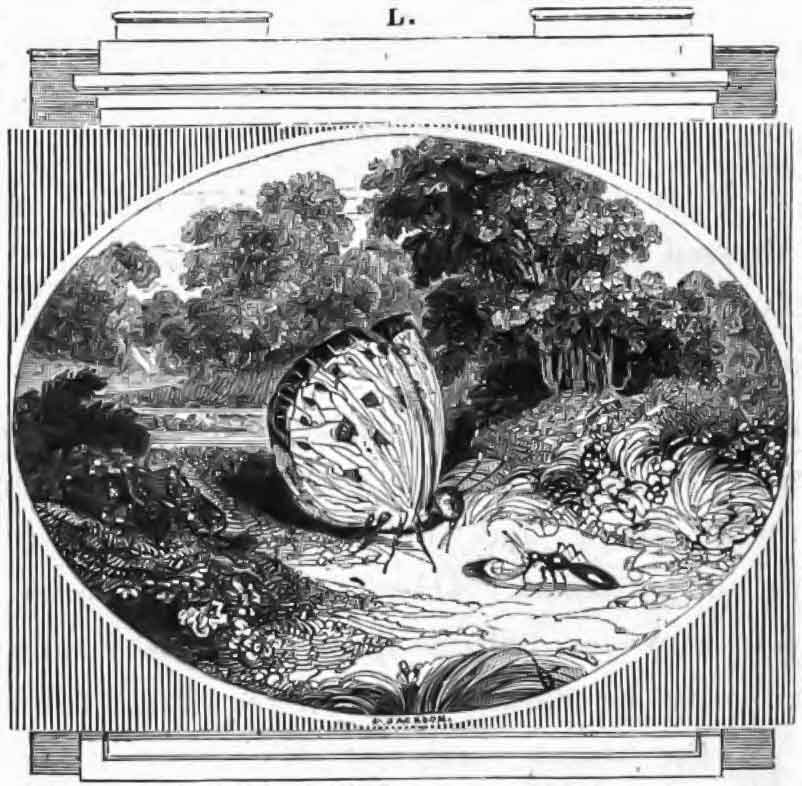Category: Gold
-

Underworld list (Wikipedia)
The underworld, also known as the netherworld or hell, is the supernatural world of the dead in various religious traditions and myths, located below the world of the living. Chthonic is the technical adjective for things of the underworld. The concept of an underworld is found in almost every civilization and “may be as old as humanity itself”. Common features of underworld myths are accounts of living people…
-

Naraka is a place of torment according to some schools of Hinduism, Jainism and Buddhism and a dynasty
Naraka (Sanskrit: नरक) is the realm of hell in Indian religions. According to some schools of Hinduism, Jainism and Buddhism, Naraka is a place of torment. The word Neraka (modification of Naraka) in Indonesian and Malaysian has also been used to describe the Islamic concept of Hell. For the mythological dynasty, see Naraka dynasty. Wikipedia presently has a note on their Dynasty page that reads: Dy.Nasty –> Die.Nasty. It has negative connotations and we should…
-

The Ant and the Caterpillar
As an Ant of his talents superiorly vain,Was trotting with consequence over the plain;A Worm, in his progress remarkably slow,Cry’d ‘Bless your good worship, wherever you go!‘I hope your great mightiness won’t take it ill,‘I pay my respects from an hearty good will.’With a look of contempt and ineffable pride,‘Begone! you vile reptile, his Antship…
-
-ium
word-forming element in chemistry, used to coin element names, from Latin adjectival suffix -ium (neuter of -ius), which formed metal names in Latin (ferrum “iron,” aurum “gold,” etc.). In late 18c chemists began to pay attention to the naming of their substances with words that indicate their chemical properties. Berzelius in 1811 proposed forming all element names in Modern Latin. As…
-

Caeneus, invincible transman in Greek mythology
In Greek mythology, Caeneus was a Lapith hero of Thessaly. Family According to Book XII of Ovid‘s Metamorphoses, he was originally a woman, Caenis (/ˈsiːnɪs/; Ancient Greek: Καινίς, romanized: Kainís), daughter of Atrax. In Apollonius of Rhodes‘ Argonautica, he is briefly noted as the great father of a lesser son, Coronus, who sailed forth among the Argonauts. Caeneus was also an Argonaut in some versions. The striking mythic image of this hero is that, indomitable through…
-

Statue of Hermes (five fables)
There are five fables of ancient Greek origin that deal with the statue of Hermes. All have been classed as burlesques that show disrespect to the god involved and some scepticism concerning the efficacy of religious statues as objects of worship. Statues of Hermes differed according to function and several are referenced in these stories. Only one…
-

Gorget patches are an insignia in the form of paired patches of cloth or metal on the collar of a uniform…just about everywhere
Gorget patches (collar tabs, collar patches) are an insignia in the form of paired patches of cloth or metal on the collar of a uniform (gorget), used in the military and civil service in some countries. Collar tabs sign the military rank (group of ranks), the rank of civil service, the military unit, the office (department) or the branch of the armed forces and the arm of…
-

Gorget, from the French gorge meaning throat
A gorget, from the French gorge meaning throat, was a band of linen wrapped around a woman’s neck and head in the medieval period or the lower part of a simple chaperon hood. The term later described a steel or leather collar to protect the throat, a set of pieces of plate armour, or a single piece of plate armour hanging from the neck and covering the throat and chest. Later, particularly from…
-

Saints Cosmas and Damian are regarded as the patrons of physicians, surgeons, pharmacists and twins
Cosmas and Damian (Arabic: قُزما ودميان, romanized: Qozma wa Demyaan; Greek: Κοσμᾶς καὶ Δαμιανός; Latin: Cosmas et Damianus; c. 3rd century – c. 287 or 303 AD) were two Arab physicians and early Christian martyrs. They practised their profession in the seaport of Aegeae, then in the Roman province of Syria. Cosmas and Damian were third century Arabian-born twin brothers who embraced Christianity and practised medicine and surgery without a fee. This led them…
-

Baetylus
Baetylus (also Baetyl, Bethel, or Betyl, from Semitic bet el “house of god”; compare Bethel, Beit El) are sacred stones that were supposedly endowed with life, or gave access to a deity. According to ancient sources, at least some of these objects of worship were meteorites, which were dedicated to the gods or revered as symbols of the gods themselves. Other accounts suggest that contact with…
-

Hopper – Like cubic, but outer portions of cubes grow faster than inner portions creating a concavity
Common examples include: halite, calcite, synthetic bismuth A hopper crystal is a form of crystal, the shape of which resembles that of a pyramidal hopper container. The edges of hopper crystals are fully developed, but the interior spaces are not filled in. This results in what appears to be a hollowed out step lattice formation, as if someone had removed interior sections of the…
-

Jet
Jet is a type of lignite, the lowest rank of coal, and is a gemstone. Unlike many gemstones, jet is not a mineral, but is rather a mineraloid. It is derived from wood that has changed under extreme pressure. The English noun jet derives from the French word for the same material, jaiet (modern French jais), ultimately referring to the ancient town of Gagae. Jet is either black or dark brown, but…
-

Shaligram
A shaligram, or shaligrama shila (Devanagari: शालिग्राम शिला Śāligrāma-śilā), is a particular variety of stone collected from riverbed or banks of the Kali Gandaki, a tributary of the Gandaki River in Nepal, used as a non-anthropomorphic representation of Vishnu by Hindus. They are typically fossils of ammonite shells from the Devonian–Cretaceous period of 400 to 66 million years ago. The fossils are considered holy by Hindus also called Astamurti, and also they resemble…
-

Adder stone aka hag stone
An adder stone is a type of stone, usually glassy, with a naturally occurring hole through it. Such stones, which usually consist of flint, have been discovered by archaeologists in both Britain and Egypt. Commonly, they are found in Northern Germany at the coasts of the North and Baltic Seas. In Britain they are also called hag stones, witch stones, serpent’s eggs, snake’s eggs, or Glain Neidr in Wales, milpreve in Cornwall, adderstanes in the south of Scotland and Gloine…
-

Goa stone
A Goa stone or Lapis de Goa was a man-made bezoar that was considered to have medicinal and talismanic properties. Goa stones were made in Goa, India and exported to apothecaries in Europe from the mid-16th to 18th century. Goa stones were manufactured by Jesuits in the late seventeenth century in Goa because naturally occurring bezoars were scarce. Their inventor was the Florentine lay brother Gaspar Antonio, and a Jesuit…
-
Gorochana
Gorochana or gorocana (transliterated from Sanskrit: गोरोचन “cattle-light”; also Standard Tibetan: (?) gi-wang) refers to a stone or ‘bezoar‘ found in cattle (Sanskrit: गो go), such as the bull, cow, ox, and yak. Its presence in the animal is reputedly indicated by the snoring or other nocturnal sounds made by the animal in its sleep. Its equivalent in Sinitic culture is calculus bovis. The vernacular Hindi and Bengali names are the same as…
Recent Posts
- 🧬 Disease Table with Low Sodium Connection
- 🧂 Sodium Reduction and Sodium Replacement: A History of Reformulation and Exploding Diseases, Including Many Diseases Unheard of Before Deadly Sodium Policies
- 🧂 The DEADLY 1500 mg Sodium Recommendation predates the WHO’s formal global sodium reduction push by nearly a decade (and it’s even worse than that)
- 🧬 What Is Beta-Glucuronidase?
- When Sugar Was Salt: Crystalline Confusion and the Covenant of Sweetness
Tags
ADAM ASPARTAME Birds Blood Bones Brain Bugs Cancer Columba Cows crystallography Death Death cults Eggs Etymology Gastrin Gold Growth hormone History Hormones Insulin Liver Mere Perplexity Metal Monkey Business Mythology Paracetamol Plants Poison Pregnancy Protein Religion Reproduction Rocks Salt Slavery Snakes Sodium the birds and the bees Thiocyanate Tobacco Tylenol Underworld Venom zinc
